MARKET OVERVIEW
The global uranium mining market is an important part of the overall energy and industrial sectors, aiding the generation of nuclear energy and playing a central role in assisting in numerous technological advancements. It is a highly specialized industry dealing with the mining of uranium ore, which is processed to be the fundamental material for producing nuclear fuel. This market functions based on the discovery and exploitation of wealthier uranium deposits, which are often located deep within the Earth's crust. These activities are done with precision and maximum care on safety standards, and it does not create a high level of environmental disturbances with the maximum exploitation of the resources available. The global uranium mining market is essentially characterized by its strategic role in energy production.
Uranium is used mainly as nuclear reactor fuel generating electricity that is not dependent on the greenhouse gas emissions. It is among the most significant markets since nuclear power is a functioning, clean source of electricity since it goes on replacing fossil fuels in the world in order to provide cleaner energy supplies. Additionally, since uranium is radioactive, it cannot be replaced in terms of its application in medical imaging and cancer therapy in addition to other research activities. The market is thus relevant to the welfare of society in its development.
Operations of exploration and extraction in the global uranium mining market entail complex geological mapping and mining technology. Methods commonly used vary from open-pit mining, underground mining to in-situ leach mining, depending on the particular nature of uranium deposits.
Refining of extracted uranium is then carried out and transformed into forms that can be used, including uranium oxide concentrate, commonly known as "yellowcake." Ore is converted into nuclear fuel through various steps that require different kinds of expertise and sophisticated equipment. Geopolitical factors also vary in the market. The uranium deposits exist irregularly around the world; the three largest producers are Canada, Kazakhstan, and Australia. The trend produces a complex network of trading conditions, as countries without major uranium deposits rely on imports to satisfy their energy requirements.
The global uranium mining market is therefore inextricably linked with the global policies, trade agreements, and regulatory policies that form its operational landscape. Export controls, safety measures, and non-proliferation agreements are some of the most significant drivers of the trend in the market. In the near future, the global uranium mining market will be increasingly defined by technological development. Advanced mining practices and automation will raise levels of efficiency and reduce operational risks and achieve sustainability. Its demand may be impacted by new reactor technologies and recycling nuclear fuel innovations, which can shift demands for uranium and modify methods of this industry's conduct. The relevance of the strategic nature of this market will increase because the quest for low-carbon energy becomes more relevant, posing gigantic challenges on rising demands.
Global uranium mining market is estimated to reach $9,585.7 Million by 2032; growing at a CAGR of 8.3% from 2025 to 2032.
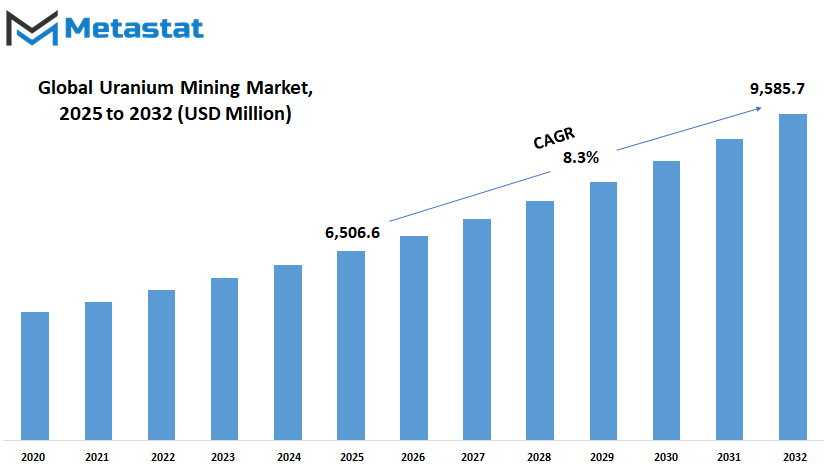
GROWTH FACTORS
The global uranium mining market is not just the heart of the nuclear power sector but also a key contributor to facilitating multifaceted uses beyond electricity production. It's also engaged in medical, industrial, and research use, which underscores its diversified relevance. As the world has evolved with technology and policymaking transforming priorities, this sector will spill into others and become an integral part of the industrial landscape of the modern world.
Global efforts towards minimizing carbon emissions have thus generated growing interest in nuclear power as a clean and sustainable source of energy. Nuclear power has established a niche position, in this respect: it is a useful means for the achievement of ambitious decarbonization goals and also guarantees consistent supplies of energy. Most countries are spending big on nuclear power infrastructure as extra energy will be required for economies making a transition to greener energies. Obviously, this is the significant role that will be played by nuclear energy in the new energy scene. But there are some issues that may limit the growth of the market.
The environmental impact related to the mining and processing of uranium is matters of concern. The processes of extraction and refining can impact the surrounding environment, so it becomes a matter of concern to ensure tight regulations for such impact minimization. Uranium price instability also causes uncertainty among industry stakeholders. Oversupply in the market or political activities in major uranium-producing regions tend to increase market price volatility, thereby deter long-term investment. But, among these problems exists the potential that would hopefully encourage industry development in the future years. Emerging technologies in mining would start addressing some of the environmental concerns associated with traditional approaches. Boosting efficiency and reducing the environmental footprint of mining activities, this technology can make uranium mining more sustainable. Technology advancements will stabilize production costs, so nuclear energy is going to be less expensive. The interplay between technological progress and global attempts at decarbonization, no doubt, will toughen the nuclear energy sector. Nevertheless, environmental concerns as well as market threats will continue to be challenging for the sector.
It is a good source of clean energy, and its predictability can encourage most countries to implement it even more. Through continued investment and innovation, the industry's opportunities and challenges will evolve for the positive and build a more sustainable future.
MARKET SEGMENTATION
By Deposit Type
Forms of deposits are divided into three various methods: Conventional uranium mining, In-Situ Leach (ISL) Mining, and Heap Leaching Mining. Each process is exclusive to the special nature of geologic conditions and hence applicable for different settings in which uranium can be extracted.
Conventional uranium mining employs a typical method of drilling deep into the earth to extract uranium ore. In most cases, it requires the creation of underground or open-pit mines depending on the depth and position of deposits of ore. After being mined, ore is treated further to extract uranium from other materials surrounding it. The method is widely used and usually becomes the prevalent method when applied in areas with high deposits of uranium. In-Situ Leach (ISL) Mining, or solution mining is the least intrusive of all.
Rather than removing ore from the ground through mechanical means, ISL involves placing a leaching solution into the rock formations that contain uranium. The leaching solution dissolves the uranium that is pumped to the surface for extraction. ISL mining is often preferred if the uranium is in a porous rock formation, where the solution could penetrate the rock easily. This method causes less surface disturbance and is also considered more environmentally friendly compared to conventional mining. Heap Leaching Mining Another method used to extract uranium is Heap Leaching Mining.
The ore is piled onto a specially conditioned surface to form heaps. A leach solution is sprayed over the heaps, trickling down through the ore over a long time and dissolving the uranium. The solution collects at the bottom, where the uranium is recovered and treated. It is useful for treatment of large amounts of ore of relatively low uranium content, offering an economical method in certain situations. Every mining technique boasts merits and demerits, relative to the type of deposit, environmental, and economic viability. Overall, the techniques provide a range of methods for opening up and exploiting uranium resources in a cost-effective and environmentally friendly way. With adaptability in the method to accommodate the conditions of the deposit, mining operations can maximize extraction at minimal environmental costs.
By Process Type
The global uranium mining market splits into two broad segments based on process type: mining processes and processing methods. Such categorization helps improve the understanding of the activities involved in the extraction and refining of resources. Each type makes a contribution to the broader industry, shaping the means by which raw materials are acquired, processed, and converted for application.
Mining processes form the foundation of resource extraction, concentrating on acquiring material from the ground. This involves a range of activities, including exploration, drilling, and excavation, depending on the resource being mined.
Techniques used in mining vary widely based on factors like the type of material, location, and environmental considerations. Some focus on efficiency, while others are keen on minimizing environmental impact. This shows how this sector can adapt to changing demands and expectations. Mining process assures a regular supply of raw materials, which is crucial for sectors like construction, manufacturing, and energy. Processing techniques come in after the mining process, transforming raw materials into forms that are usable. They range from refining, purification, among other processing that enhances the quality and usability of the resources. For example, in mining, much of the metals mined are smelted or chemically treated to purify impurities before they are ready for use in industry.
Similarly, much other material, like minerals or rare earth elements is processed specifically in order to achieve utmost value and use. All these are crucial steps in bridging the gap between raw material production and final product manufacturing. Mining procedures and processing technologies are related in a manner that they create a chain which dictates the market's operation and development. Their effectiveness and creativity dictate the way resources are developed efficiently, impacting industries globally. Enhancements in these fields can result in efficient management of resources, savings, and minimized environmental impacts, thus highlighting their relevance in addressing future demands. By looking at these two groups, market structure will enable the study of what is happening in that industry by also identifying opportunities and challenges it might be experiencing.
As one can actually comprehend processes within mining and techniques utilized in processing, this enables one to comprehend their worth in the supply chain and economies in general. And as those advancements continue, those two branches will continue to be central to the building of resource extraction and use in the future.
By Application
The global uranium mining market is further segmented based on its application into the three broad categories: Nuclear Power Generation, Medical Applications, and Other Industrial Applications. All these sectors play a major role in how the products or services under this market are utilized. For example, within the area of nuclear power generation, products are primarily used for assisting in the generation of power through nuclear reactors, whose processes and materials are specialist. For example, it is of a considerable advantage to the power-generating nations that choose nuclear energy, both safety and efficiency of the plant being the primary concern for advancement.
This global uranium mining market gets itself into uses in medical diagnosis, treatment, and research. The medical application products most of the time take on some other required responsibilities from health care practitioners in attempting to deliver the best service to the patients. For instance, certain materials have been used in radiation therapy against cancer, while others have been used in diagnostic devices, for instance, imaging devices used for detecting various medical conditions. These uses have been instrumental in improving healthcare using more precise and effective ways of treating diseases.
The Other Industrial Applications category includes various usage in various industries that are not covered under the previous two categories. This can include manufacturing applications, construction applications, and technological applications where the product itself is utilized to enhance performance or guarantee the safety of production. These applications enable various industries to maintain operational efficiency, ensure safety specifications, and enhance the quality of products.
This serves to differentiate between the applications and what is required in each specific sector, thus indicating a better manner of customizing products or services to the various needs of the various industries. While both have their specific issues and requirements, both bring the industry as well as the overall sector forward, thus the chances of continued innovation and tweaking in how the global uranium mining market further uses the product or service to improve performance across these industries.
|
Report Coverage |
Details |
|
Forecast Period |
2025-2032 |
|
Market Size in 2025 |
$6,506.6 Million |
|
Market Size by 2032 |
$9,585.7 Million |
|
Growth Rate from 2025 to 2032 |
8.3% |
|
Base Year |
2024 |
|
Regions Covered |
North America, Europe, Asia-Pacific Green, South America, Middle East & Africa |
REGIONAL ANALYSIS
Geographical segmentation of the global uranium mining market is segmented geographically in North America, Europe, Asia-Pacific, South America, and the Middle East & Africa. North America includes additional market size, in the United States, Canada, and Mexico. Key countries involved being the UK, Germany, France, and Italy, while the remaining falls in the other regions of Europe.
The countries of the region of Asia-Pacific include India, China, Japan, South Korea, and many more countries of this region. The region of South America comprises Brazil, Argentina, and all other nations falling within South America. Middle East & Africa has been sub-divided further into GCC countries, Egypt, South Africa, and the remaining regions. A number of factors influence the percentage contribution of each region to the global uranium mining market demand, level of production, and their economic status, amongst others. It differs by area by area where growth is diverse, although in Europe and Asia Pacific it is a great prospect in the near future or so. As the nations progress with further development and invest in nuclear power, the demand for uranium would increase, so trends in the market would be altered. Additionally, the demand for uranium mining along with processing will progress further to serve global energy requirements.
Knowledge of global uranium mining market break-down by region is necessary to comprehend opportunities and challenges in Uranium Mining. Similar to varying growth rates and market conditions in regions, companies will need to modify their strategies to leverage the variations of possibility in each region. With an increase in demand for uranium, these regions would continue to dominate the global uranium mining market in the years to come.
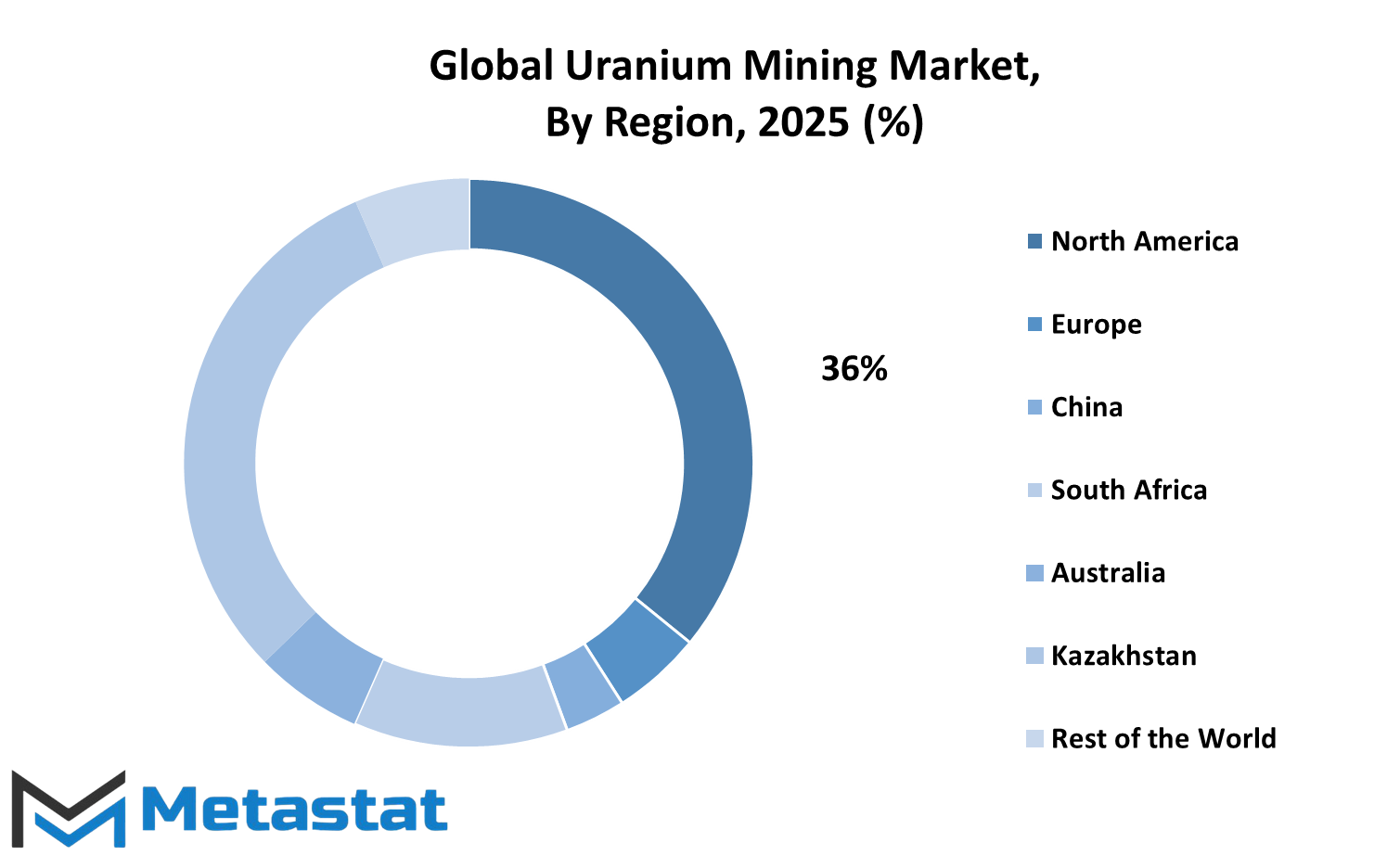
COMPETITIVE PLAYERS
The global uranium mining market has a number of notable companies that are instrumental in its operations. Of these, the biggest players within the sector are the enormous mining operations and production of uranium by Cameco Corporation, and the other large one is Kazatomprom, being a Kazakhstan-based company, which is also regarded as the largest producer of uranium globally. Orano, previously Areva, is significantly engaged in mining as well as processing uranium with deep care towards being sustainable and innovative.
The other firm that is significantly engaged in extracting and developing uranium assets is Uranium Energy Corp, which operates in North America, mainly in the United States and Canada. China National Nuclear Corporation (CNNC) is one of the most important state-owned firms in China that deals in uranium mining market to make sure that the nation has a safe supply of this crucial commodity. Another firm with large presence in the U.S. is Energy Fuels Inc, which specializes in uranium and vanadium production from its operation.
Denison Mines Corp. is another firm that is well known within the industry; it has operations both in Canada and the U.S., and a portfolio of quality uranium projects.
Paladin Energy Ltd. is based in Australia and Africa and specializes in exploration, development, and the production of uranium in order to provide a safe supply for nuclear power generation globally. Another giant mining firm in the world that mines uranium is BHP Group, although it produces a diverse array of minerals. NexGen Energy Ltd. is a rising contender that specializes in extensive uranium exploration ventures in Canada. Peninsula Energy Ltd., working in South Australia and the United States, hopes to supply uranium via its ventures. Centrus Energy Corporation specializes in uranium enrichment services and thus forms an integral part of the nuclear fuel cycle.
There are also other firms, such as Yellow Cake Plc, Boss Resources Ltd., and Ur-Energy Inc., which constitute the global uranium mining market, each having their own distinct exploration, development, and production activities. The variety of these firms portrays the worldwide nature of the global uranium mining market, which is still indispensable in the production of nuclear energy for the world's ever-growing need. Each firm contributes its own resources and experience to the project, which assists in guaranteeing uranium supplies for the future.
Uranium Mining Market Key Segments:
By Deposit Type
- Conventional Uranium Mining
- In-Situ Leach (ISL) Mining
- Heap Leaching Mining
By Process Type
- Mining Process
- Processing Method
By Application
- Nuclear Power Generation
- Medical Applications
- Other Industrial Applications
Key Global Uranium Mining Industry Players
- Cameco Corporation
- Kazatomprom
- Orano (formerly Areva)
- Uranium Energy Corp
- China National Nuclear Corporation (CNNC)
- Energy Fuels Inc.
- Denison Mines Corp.
- Paladin Energy Ltd.
- BHP Group
- NexGen Energy Ltd.
- Peninsula Energy Ltd.
- Centrus Energy Corporation
- Yellow Cake Plc
- Boss Resources Ltd.
- Ur-Energy Inc.
WHAT REPORT PROVIDES
- Full in-depth analysis of the parent Industry
- Important changes in market and its dynamics
- Segmentation details of the market
- Former, on-going, and projected market analysis in terms of volume and value
- Assessment of niche industry developments
- Market share analysis
- Key strategies of major players
- Emerging segments and regional growth potential



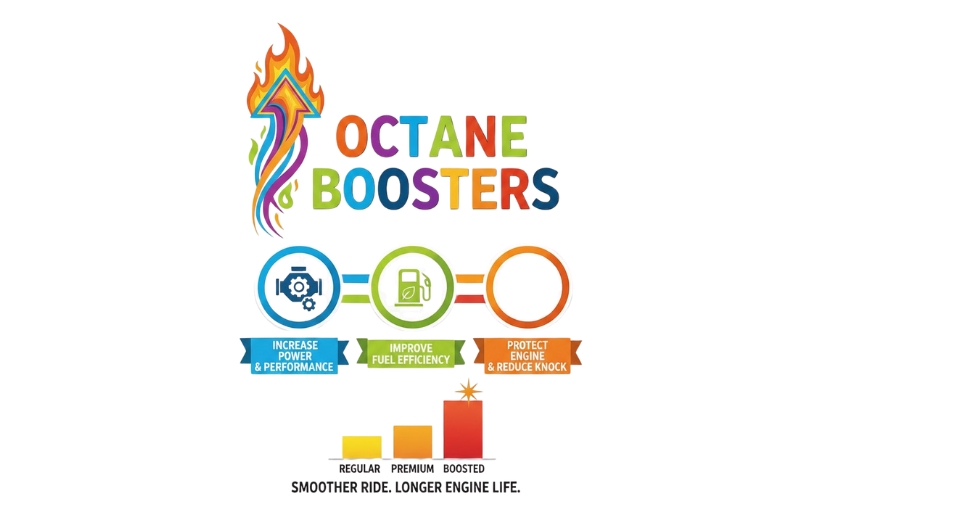
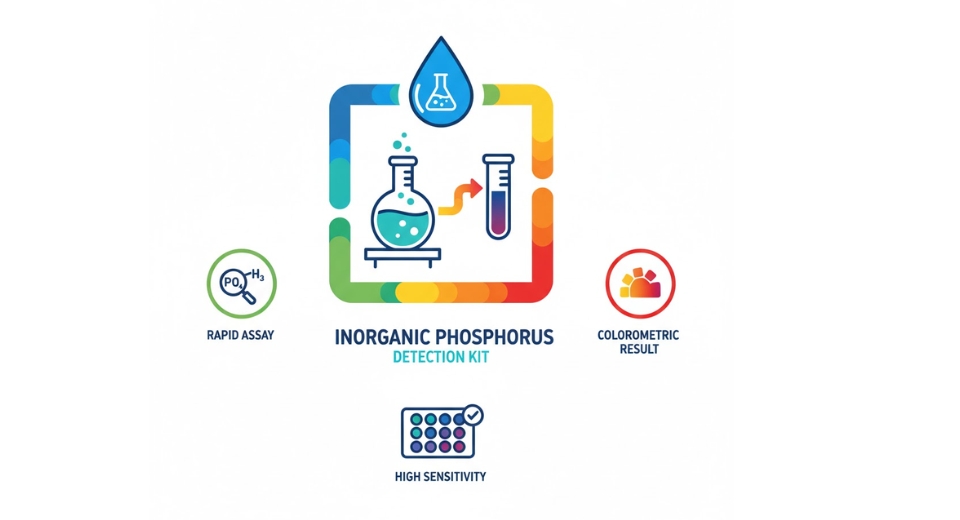
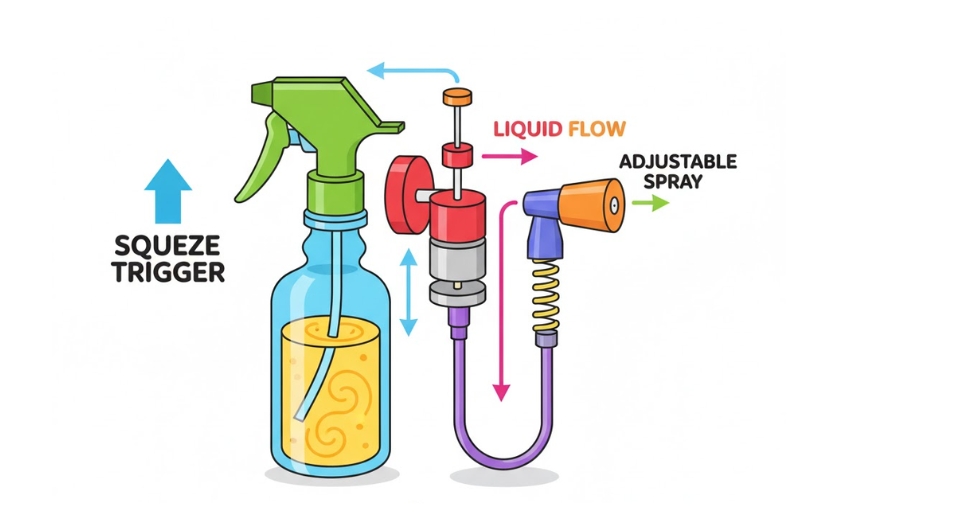
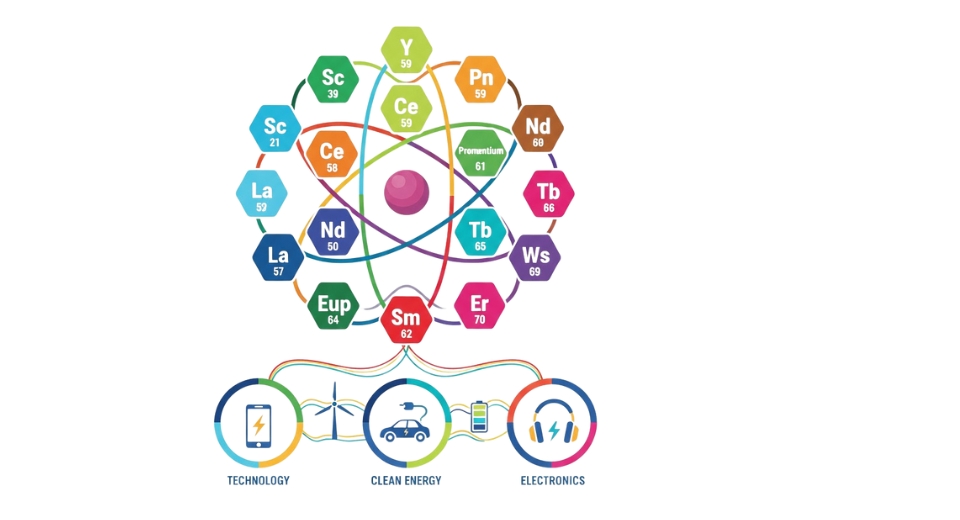

 US: +1 3023308252
US: +1 3023308252






